Prophetic Leadership Toward a More Just World
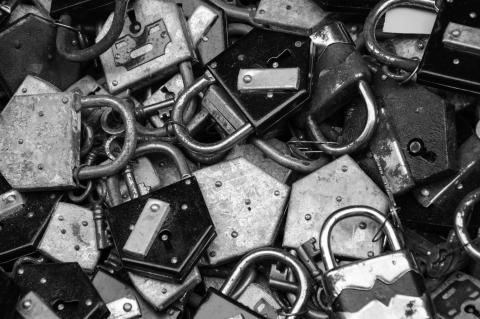
Faith communities across the country are drawing from deep wells of legacy to organize and advocate for a more just world. People of faith are returning to their spiritual roots for guidance on how to engage the world’s struggles for justice in ways that honor our faith. To equip faith communities to boldly do the work of justice in their own areas, Sojourners offers the Faith in Action series. Learn more about how to put your faith into action here.

Often I wonder, what is it about me that puts me at the table? I love my x chromosomes and femininity; being a woman is an amazing thing! But in these circles, they seem to come with a cost. No, I’ve not been barred from sitting at the leadership table, but am I only here because I don’t have two other things I longed for – a husband/partner to share life with and children to love and care for and call my own.
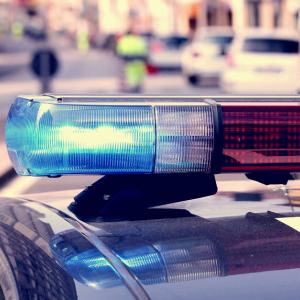
My earliest encounter with law enforcement was when Kern County sheriff’s deputies pulled my cousin and me over in the fall of 1993. They pulled us out of vehicle in middle of nowhere and pushed my face in the gravel. I could taste the bits of rock pushing on my lips and teeth as the deputy asked, “Where is the knife?” And for the third time I assured him that I didn’t have a knife. We were eventually released that night and drove home, but that would not be my last encounter with the sheriff’s department.
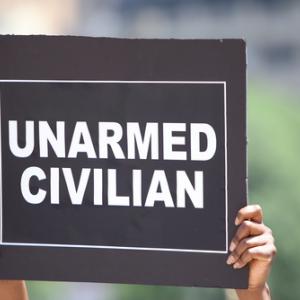
But evangelical leaders are stepping forward. They are voicing support for the structural and systemic protection of the image of God in black people. And as in the days of MLK and Mandela, it is essential that allies understand the movement and its operating principles.
The Black Lives Matter movement is the most recent phase of the 500-year global struggle for black freedom. It is not random. It is not disorganized.

The best way to change that old talk that black parents have with their children is to start a new talk between white and black parents. These conversations will make people uncomfortable, and they should. White parents should ask their black friends who are parents whether they have had “the talk” with their children. What did they say? What did their children say? How did it feel for them to have that conversation with their children? What’s it like not to be able to trust law enforcement in your own community?

In this season of preparing for Christmas, there is a growing number of unaccompanied children arriving on the U.S. southwestern border. The numbers have been increasing in the last few months, enough to move government offices to prepare for their coming. National security continues to be the most important governmental concern, but even then, laws require that migrant children detained by our government be fed and sheltered until they can be released to a legal sponsor. It leads me to wonder: If governmental offices are preparing to receive these unaccompanied children, then what are we Christians doing to prepare to receive them?
Every Christmas as the story of the birth of Jesus our Lord is read in congregations and in homes there are always the laments about how sad and even cruel it was that there was no place for Mary and Joseph and the baby Jesus. Where was the loving and caring welcome for them? We cannot change the most unwelcome reception the Christ Child received at his birth, but we can learn from it.

Not since the World War II have United States politicians exercised such an extreme level of xenophobia, nationalism, and unapologetic bent toward fascism. Trump is calling Americans to break faith with our own constitution, which guarantees the protection of all faith traditions within our borders. This is not only un-American: It is ungodly. All humanity, regardless of religious affiliation, is made in the image of God. As such every human being is worthy of respect, dignity, and equal protection of the law. To scapegoat Muslim people is to scapegoat the image of God on earth.
There is a real threat, but it does not come from Islam. It comes from a relatively small band of misguided extremists who are leveraging our fear in order to destroy us — from within.
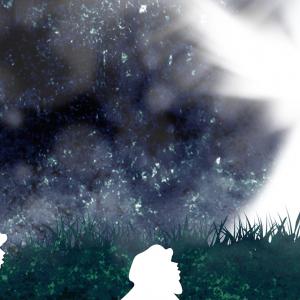
In a land where Christ himself walked, war is pushing millions of people from their homes. Twelve million Syrians have been forced out in the worst refugee crisis since World War II. They are trekking across oceans and deserts to not just seek a better life, but to try to save their lives from a war that has destroyed their homes and taken away their livelihoods. With little hope of returning home anytime in the near future, they are seeking the safety and protection of foreign lands.
This journey that millions of refugees endure today is not unfamiliar to our Savior, Jesus Christ.
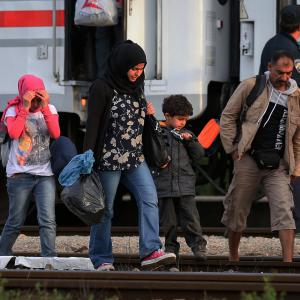
If Donald Trump had been Pharaoh of Egypt, the Holy Family never would have escaped from Herod’s persecution. Jews would have been prohibited from entering the country. Christmas features the story of a family from the Middle East leaving a homeland in fear and seeking refuge is a foreign land, just as millions do today.
If you visit Egypt and its ancient Coptic Church, you’ll see images of the Holy Family everywhere: Joseph, Mary — always on a donkey — and the infant Jesus. They are moving, wandering. You’ll find pictures of them passing by the pyramids. Egyptian Christians treasure this story for theirs is the land that offered welcome and hospitality to the Son of God when he was a refugee.

Thanksgiving. That word holds profound meaning for Americans, most of it nostalgic. I remember in grade school when our classes would present Thanksgiving pageants that retold the story of Thanksgiving. We all know it by rote:
The pilgrims were persecuted in England (probably because the men wore buckles on their hats, culottes, and white stockings — who does that?). Anyway, in 1620, they got in a boat and sailed to America, where they met brown people in paper cutout, feathered headdresses and hand-me-down 1970s fringe vests and wrangler jeans. The pilgrims said “Hi!” and the headdress people (called “Indians,” for no good reason) said “How!” When the pilgrims realized they didn’t know how to cook the food in this “new world,” the Indians showed them how to cook cornbread, cranberry sauce, and collard greens (or at least that’s how the story went in my school). Turkeys were plentiful in the new world, so when the hat buckle people and the headdress people held a feast in November of 1621 to celebrate their new friendship, a turkey sat at the center of the table.
How Indigenous Cree Spirituality Teaches Us Repentance That Leads to Life

A friend of mine who was serving as chief of his band said that the heart of Indigenous Cree spirituality revolves around praying for good hunting in the fall, and giving thanks for good hunting in the spring.
When I relate this story, sometimes people ask, “How do you know it was good hunting?”
I replied, “If you make it through the winter alive, it was good hunting.”
In Indigenous Cree theology, we begin with the idea that it is a good world. The Creator made her, and she provides for us. Our response to enjoying the world that Creator has provided is to give thanks.
Thanksgiving fulfills the circle of relationships that characterize our journey here on the circle of the earth. Being unthankful can indicate a shift in focus, from the relationships that make up our world to focus upon ourselves.

When we think about the meeting of the first pilgrims and the Native Americans, we usually connect vicariously to one side of that old Plymouth encounter, mysteriously linking our faith journey to the early pilgrims’ faith journey. But what about those long-ago Native Americans? Is there a reason to remember them as more than a foil for the pilgrims?
Year after year we think warmly of that first union of the pilgrims and the Native Americans — and then we continue on in the supposed faith tradition of one of those peoples without another thought to the fate of the others.
So what role do those old Native Americans play in our faith today, and how might we bring them to mind or honor them? Here are a few ways you can faithfully honor both sides of the Thanksgiving table this year.

“U.S. military intervention is the problem, not the solution. Since the U.S. started bombing Iraq and Syria last year, ISIS has grown stronger.”
In the months since Cortright’s charge the world has witnessed millions of Syrian citizens fleeing the conflict. Having saturated the capacity of neighboring nations to accept refugees, displaced Syrians have continued north through Turkey and Eastern Europe, en route to Germany and neighboring countries. In September, Russia inserted itself into the Syrian military calculus, offering military support for, it claimed, the Assad regime’s fight against ISIS. Instead Russian bombs showered insurgent Syrian rebel forces. Recent reports confirm that Russia is actually helping Assad retake Aleppo, the largest city in Syria, from insurgent forces, with an Iranian assist.
In moments like these it is tempting to stand in solidarity with the disciple Peter, who tried to defend the helpless with military might. When Jesus was seized by temple police, Peter took out his blade and sliced off the ear of the high priest’s servant, Malchus. (Matt. 26:51-56, Luke 22:50, John 18:10-11). Jesus stopped him.

As Mariame Kaba of Project Nia notes, police violence is not simply just the killing of peoples. It includes the every day forms of harassment, surveillance, and profiling that support both gender and race hierarchies.
The campaign to #sayhername is not simply about remembering and organizing around black women and other women of color who have been killed by the police. It is about re-conceptualizing what police violence means. When we center women of color in our analysis, we see that police violence is much more than individual acts of police brutality. It is an entire system of harassment and surveillance that keeps oppressive gender and racial hierarchies in place.
We are then left with the task of not just holding individual police officers to account, but re-conceptualizing what justice, safety, and accountability should be.
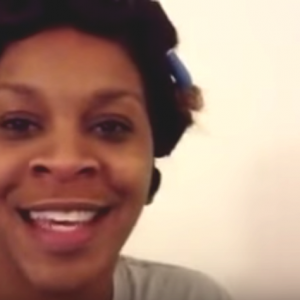
There is a long pause near the end of Sandra Bland’s first # SandySpeaks video, made in January of 2015. It lasts almost five seconds, and in that pause my calling resides. There is no other moment I identify with more solidly.
Near the end to her video, Sandy says, “It’s time for me to do God’s work…”
Then the pause comes, with a sigh in the middle.
Then, “I know everybody don’t believe in God, which is fine. But I want you to know that on Sandy Speaks, I’m gong to talk about God, because for me has truly opened my eyes and shown me that there is something out there we can do.”

Early in the course, probably in the first class, Professor Caldwell dropped a simple yet profound piece of knowledge on us that has stayed in my head ever since: "Racism is gender-specific.”
On a personal level, this statement affirmed what I already knew through life experience but hadn't given much thought: my experience of race and racism in a female body comes with a unique set of reactions and interactions that differs from that of the black men and boys in my life. In a similar way, I had to admit that there were certain expressions and negotiations of black life emanating from male embodiedness that I would never experience.
The hard part came in being able to acknowledge both to be true, intellectually and practically, without feeling like I had to suppress one part of my self in order to embrace another part of my self. On paper, it seems like the right thing to do to honor and respect differences within a group that has much in common. Yet what I have found in over twenty years of working in the social sector and in faith communities is that it is a rare thing when we are able to live this out in the real world.

In 1851, attendees of a feminist convention gathered in a packed hall in Akron, Ohio. It was a time when — even in the midst of a fight for women’s rights — mostly men spoke. They talked of dainty women — delicate and deserving of special protection.
Sojourner Truth sat in their midst. Miss Truth sat quiet, listening to men fill space with empty arguments about why women should or should not have the vote. Finally, she rose to speak and a visceral wall of hostility rose from the masses to greet her. The voice of this "n___ger woman" could muddy the message, they hissed. It could conflate the movement for women’s equality with the abolitionist movement — and that would be the death of suffrage, they feared.
But, as Dr. King liked to quote, “Truth crushed to earth will rise again.”
The Spiritual Lie: God Is White So White People Are Like Gods
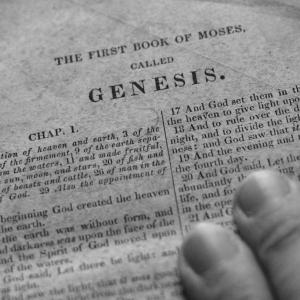
I didn’t see the film Malcolm X in theaters. I waited to see it on video. Big mistake.
I watched it in my home, just off campus from University of Southern California, late at night when everyone else was sleeping. Another big mistake.
At the time I was living in a house with one other black person and a bunch of white and Asian friends. I was attending a mostly white school and a mostly white church and had attended a mostly white institute for urban transformation that was borne out of my church. Ironically, it was there that I was required to read The Autobiography of Malcolm X. But I never read the whole thing, only sections.
So, I sat in the dark living room, lit only by the television screen, and watched Denzel Washington bring Malcolm X to life … by myself. And there, in the dark, Malcolm’s words about Jesus hit me to the core.
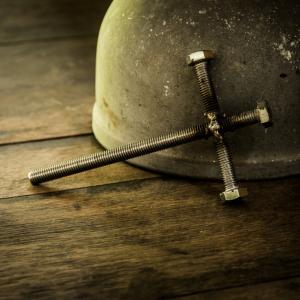
The Rev. C.T. Vivian, who was central to the achievements of the civil rights movement of the 60s, said in an interview with me this week that the evil perpetrated at Emanuel AME Church in Charleston, S.C., was “the best thing that could have happened.”
Not the deaths of the innocent people, he says, but the evil act that was carried out in a house of worship made way for critical action that might not otherwise have happened. “It came out even better than anybody would have thought,” he said, “because we not only got the flag down, but more than that, we got rid of the great Southern symbols. If we handle it right, we have a good chance of getting a whole lot done more than we thought. Black ministers have to go to white ministers and say this is the day that we've been waiting for, the day when the public is really ready to have the war of yesterday forgotten.”
Vivian may well be right, but the incident made this writer wonder, yet again, about the whereabouts of God in the presence of oppression.
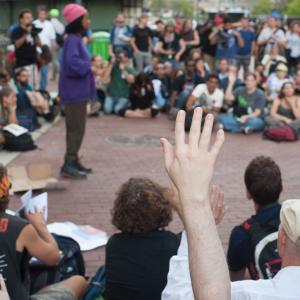
In the past few years, a new era of civil rights organizing has emerged out of the depths of tragedy and despair. The list of names of young African Americans who have died at the hand of police, out-of-control vigilantes, and hate-filled white terrorists has fostered profound lament and intense anger. The simple phrase, “Black Lives Matter” has galvanized activism, mobilizing, and organizing.
This new civil rights battle includes legislative battles at state houses like South Carolina, leading to the removal of the Confederate flag from the grounds. There is work to do in D.C. as well. Yet the real front of this new era will be on the corporate scene, on Wall Street and with economic power brokers and corporations. It is time to go “over the heads” of politicians and enter into dialogue and debate with corporations over the value and dignity of dark bodies, and how to reconstruct a moral economy that is not profiting off of people of color.
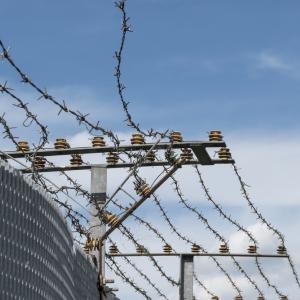
The families arrive at the center after having traveled for weeks. Their bodies are completely filthy dirty. Their clothing and shoes have a darkened, grey, muddy appearance. In some cases, their clothing is still wet from having crossed the Rio Grande River. Since June of last year, large groups of refugees, mostly mothers with a child or two, walk through the door of the Humanitarian Respite Center at Sacred Heart Church in McAllen, Texas, their faces full of joyful tears as they experience the warm and welcoming faces of the many volunteers applauding, shouting out, “Bienvenidos!” “Welcome!”
The refugee families just spent several days at the Border Patrol Processing Station – the “Hielera” – the “Ice Box” as the refugees call it, because it is freezing there. While in this processing facility, the refugees are kept in cells, where they wait fearfully for what is to become of them.
The Dangerous Message Our Nation Is Sending
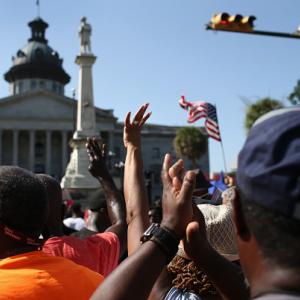
When the Confederate flag was removed from the South Carolina statehouse Friday morning, Gov. Nikki Haley spoke solemnly of the nine black churchgoers who were shot to death less than a month ago at Charleston’s Emanuel African Methodist Episcopal Church.
“We have all been struck by what was a tragedy we didn't think we would ever encounter,” Haley said of the horrifying massacre before she signed the bill with nine pens that will go to the families of the victims. “Nine amazing people that forever changed South Carolina's history."
Haley also referenced the “grace” shown by the nine families when they forgave the white gunman. She said their grace helped usher the state toward this long overdue decision. The assassinations at Emanuel AME, followed by forgiveness from the grieving families, were similarly cited by several South Carolina lawmakers as their reason for voting to remove the flag. Black Deaths Matter. That’s the painful and dangerous narrative being developed out of South Carolina. Only Black Deaths Matter. Our nation is capable of doing the right thing – such as taking down the Confederate flag in the year 2015, a flag that represents the racist, immoral, unconstitutional defense of slavery and Jim Crow – but only when black deaths happen and are met by a response deemed acceptable. Ever since this flag was raised in 1961 to send the message that South Carolina would not honor equal protection under the law, tens of thousands of small and large protests have not been enough to move the power brokers to take it down.
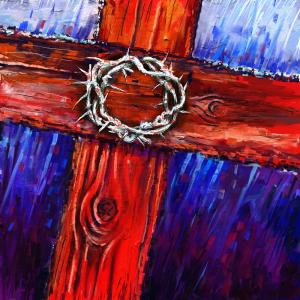
When we discuss the gospel of Jesus Christ, we realize that it is a revolutionary message asking us to love our enemies, to do good to those who curse us, and even harder, to turn the other cheek. The gospel is going beyond that. It is asking us to receive, stand, advocate for the poor, incarcerated, and those living in the margins who have been pushed out by the institutions of our society. Jesus took many risks at times during his ministry, and when he started turning over tables and exposing the priests’ racket of selling sacrifices, it did not work out so well for him.
I’m not asking people to go and get themselves killed, but just ask yourself, “How much of the gospel am I willing to perform?”
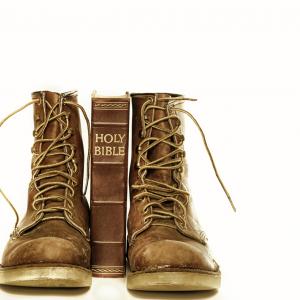
The work of the prophet is to stand as an advocate for others. The advocate role is an important role in the ministry of justice. Many American Christians hold a position of privilege in American society. As the privileged, there is an important voice that can be raised on behalf of the marginalized. American Christians can advocate for the rights of the unborn, the poor, and the oppressed of our society. Part of our strength would not be to effect change that would further our privilege and affluence, but to advocate for change that would benefit the very least of our brothers and sisters. The role of the geber is to advocate for the suffering in Jerusalem and offer a lament on behalf of the suffering.

It was a devastating weekend for black people in America.
On Friday, a white police officer pulled his gun at a pool party and assaulted a 15-year old black girl who cried for her mom in McKinney, Texas. On Saturday, a young black man committed suicide in his parents’ home in the Bronx after being held without trial at Rikers Island for three years (nearly two in solitary confinement), accused of stealing a backpack — a charge that prosecutors ultimately dropped. On Sunday evening, hotel security officers profiled four young black organizers from Baltimore in the lobby of the Congress Plaza Hotel at the conclusion of The Justice Conference.

The fight for the preservation of black and brown lives, that took unexpectedly deep roots in Ferguson and has now spread across nations, was a fight many of our students quickly came to lead, and folks like me have followed.
But many of these young people are not Christian, and frankly, the perception that local congregations lackadaisically approached this movement before it became a national headline — and brought a healthy, condescending dose of respectability politics and patriarchy along with their eventual involvement — is not making most of the millennial set excited about the prospects of salvation.
But local faith leaders like Rev. Traci Blackmon and Rev. Starsky Wilson, and others raised in faith like my friend Rich McClure and me, have clung to the radical example of Christ that guides our collective and individual action.
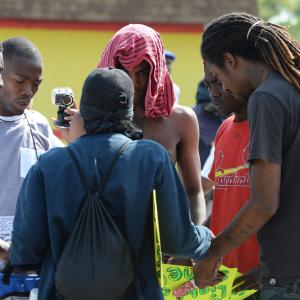
Socioeconomic reconciliation is the removal of gaps in opportunity, achievement, health, thriving, and well-being that exist between groups of people in our nation and world. In the face of myriad breaches of the common human bond and experience, a breakthrough act of the Spirit today would activate and agitate the established church in her ministry: a ministry of socioeconomic reconciliation.
The ministry of socioeconomic reconciliation will require a church empowered with tongues of fire and the gift of interpretation. These tongues must speak with a prophetic voice. But we must also have the heart and capacity to translate the words of marginalized communities into the language of policy, power, and program. That is why I thank God for the compelling, confusing roles I’ve been called into over the last nine months. This form of reconciliation requires the church to fulfill of the vocation of the militant mediator, which offers as much renewal in the streets and city hall as we experience in the sanctuary.

The issue isn’t that God does not have power; the issue seems to be more that we do not use the power that God gave to us. While we profess to love God and God’s son Jesus, we are all too ready to dismiss what God gave us in, with, and through the life, death, burial, and resurrection of Jesus. While we say we are Christian, we bypass too often the words of Jesus and latch onto other parts of the Bible, most often the words of Paul. While Paul’s writings have their own power, they do not have the power of Jesus’ words, nor do they carry with them the promise of the Holy Spirit, which does have the power to sustain and strengthen us.

The boy is terrified. He has come thousands of miles running from terrible danger. He has encountered horrors on the way, riding on top of “La Bestia,” the train that carries migrants from Central America through Mexico. He stands in an immigration courtroom and hears the irritated judge threaten him with deportation because he has not been able to find a lawyer. He is staying with distant relatives as he goes through the court process, and they are barely able to feed the extra mouth, let alone pay for a lawyer for him. He is facing the very real possibility of being sent back into territories controlled by the Mara Salvatrucha, the organized crime syndicate that murdered his cousin and has threatened to kill him and his family if he doesn’t join up. He knows that they are likely to make an example of him. He feels terribly alone. Even though the translator speaks his language, he feels like no one in this strange land understands the cry of his heart.

Years ago as a child growing up in Cleveland, Ohio, I was befriended by a wonderful family around the corner from my home. The patriarch of the family, Edward Blunt Sr., was a hard-working executive for a telecommunication company; the matriarch, Roma Blunt, lovingly called Aunt Roma, was a consultant for several local educational institutions; and their son, Ed Jr., became one of my best friends and adopted brother.
Ed and I played sports, shared the same birthday, and graduated from high school and college together. Ed's family provided a unique gift for the young men in our neighborhood. As a result of their southern roots and deep-rooted village values, they believed adults — especially adults of African descent — had a responsibility to aid and assist in the development of young men in the community.
At least weekly, a gang of musty, sweaty, boisterous young men crowded into the Blunt household to take part in a ritual of culinary excellence provided by Aunt Roma. In this house we did not own, pay for, or live in, we witnessed the southern artistry and gastric creativity produced with a palette of collard greens, gumbo, cornbread, sweet potatoes, macaroni and cheese, fried okra, and fish on the canvas of our senses. The white house on Green Road became our hangout, respite, and my second home. Since I lived geographically closest to the Blunts’ home, I found myself at their address more frequently than other "brothers" in our network.
Upon one of my routine visits after finishing another amazing meal, Aunt Roma passed on a special gift. She handed me a key to the home. She stated with matter-of-fact ease, "Otis, you're over here enough, you might as well have a key."
After I said thank you, she began to reemphasize the rules of the house.
"You are always welcome here … you are welcome to eat, rest, and relax ... I trust you, and as long as you abide by the rules of the house and your parents are aware of where you are, this door is always open to you."
I was given access to the Blunts’ home because of my relationship with their son. I was given access to a home I did not create, build, or purchase. Because of my relationship with their son, I was given access to an environment I did not create.

As the world looks toward the United Nations Conference on Climate Change in Paris in December, it would serve us all to reflect on California.
When I moved to California in August 1991, the state’s five-year drought changed the most mundane aspects of life. Throughout my East Coast childhood, this is how I learned to brush my teeth: Turn the knob on the sink, place the toothbrush under the running water, brush, spit, brush again, spit again, place your Dixie cup under the running water, rinse your teeth, gargle, spit, use the running water to rinse the sink of all your spit, then — and only then — turn the water off.
I performed that basic ritual during my first week in Los Angeles. My roommate scowled. She had moved to LA years before and had lived through the state’s drought. Over the course of those five years, every resident of California had taken ownership of the state’s dire situation by altering the daily routines of their lives.
Common measures included: placing bricks in the backs of toilets to use less flushing water, only flushing once or twice a day, only using the absolute minimum amount of water necessary to brush one’s teeth, cooler time-tight showers, and the list goes on.
History records my first months in Los Angeles as the tail end of the state’s late 1980s drought. People danced in the streets of South Central, East LA, and Santa Monica as El Niño’s waters soaked cracked earth in late 1991. But as citizens of a state in crisis, our shared sense of duty had transformed small changes in daily routines into a collective culture of conservation. In fact, to this day, many Californians still practice those same measures.
But it’s been 24 years since those dire days and California is fighting again, slugging into its fourth year of another drought. But this one is different. This is the worst drought in 1,200 years, according to a study published in the American Geophysical Union journal.
Standing in a brown field that should have been packed with several feet of snow on the first day of Earth Month, California Gov. Jerry Brown said: “It’s a different world. We have to act differently.”

Even as the clock ticks down to COP 21 in Paris this coming December, agreement has yet to be reached about exactly what the conference could or should accomplish. There is little consensus concerning outcomes that might actually bring about change. Not unlike other issues where binary thinking has predominated, we are presented with an either/or scenario: economic collapse and damaging human impact, or economic prosperity and destructive impact on climate.
What is different now, however, is that the economic axis has shifted. Crucial to the Paris discussions is the fact that Western-driven economic theory and practice, rooted in the competitive polarities of prosperity versus paucity, now dominate the globe, while Western economies themselves do not. And it is this largely binary economic way of framing the issues of the environment that militates against significant accomplishment in Paris. Not unlike Copenhagen in 2009, or Kyoto in 1997, governments are posturing so as not to give away economic advantage. National prosperity continues to trump the environment.
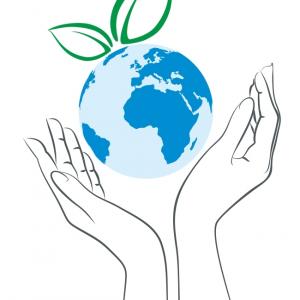
The prophets’ preoccupation with justice and righteousness has its roots in a powerful awareness of injustice. That justice is a good thing, a fine goal, even a supreme ideal, is commonly accepted. What is lacking is a sense of the monstrosity of injustice. Moralists of all ages have been eloquent in singing the praises of virtue. The distinction of the prophets was in their remorseless unveiling of injustice and oppression, in their comprehension of social, political, and religious evils. —Abraham Joshua Heschel, The Prophets
Injustice anywhere is a threat to justice everywhere. We are caught in an inescapable network of mutuality, tied in a single garment of destiny. Whatever affects one directly, affects all indirectly. —Martin Luther King, Jr.
According to the U.S. Environmental Protection Agency, environmental justice is defined as:
The fair treatment and meaningful involvement of all people regardless of race, color, national origin, or income with respect to the development, implementation, and enforcement of environmental laws, regulations, and policies.
As we consider this definition, and look around our communities, do we find this fair treatment taking place? Are we aware of how economic and environmental decisions are made? Many times it can become so overwhelming that we think it best to leave it to the experts. Unfortunately, this can lead to exploitation, as discrimination typically takes place in poor and underserved communities where people may not understand their rights, or they choose not to fight back out of fear. As we dig deeper and the shackles are removed, we begin to see how economic and environmental justice are connected and how this exploitation is directly related to incentives like government funding, tax breaks, and land grabs that favor corporations over human beings and the environment. Does the end result benefit all God’s creation or just a wealthy few?
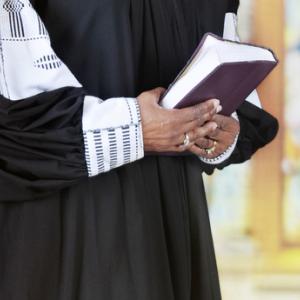
One afternoon I was invited to share my experiences as a woman in Christian leadership — the challenges, joys, issues, struggles and blessings. It felt like those of us sharing were instant, intimate, connected soul sisters. Without knowing each other, and as different as our stories were, the common threads ran deep. We were all women in high levels of leadership in Christian organizations. So why does it still hurt so much? We’ve made so much progress, haven’t we?
After some questions, we reviewed what we would each share from our different perspectives. This would be a heartfelt, sincere, and vulnerable time of sharing. But I wasn’t quite prepared for what happened. The opening question was, “When did you first experience a challenge or issue with your leadership as a woman?” As the first woman began her story, the vulnerable places of her past and present began to flow through tears streaming down her face. And my own eyes welled up and brimmed over. This struck home to the core of my own experience. This is hard. It hurts.
Here are just a few of the barriers we shared about that afternoon. There’s the way that women are looked at differently with respect to their leadership styles. What is seen as strength in a man’s style may be critiqued as aggressive in a woman. When a man’s ego affects his decision-making, rarely is it confronted or dealt with, whereas a woman is called out for letting her emotions get in the way. This feeds the fear for many women leaders that it’s not OK to display any vulnerability. As much as we don’t want to admit it, there is also still a bit of a “good ole boy” way of operating even in Christian organizations that are advocates of reconciliation. To call it out can get one the blame of having a “chip on one’s shoulder” and playing the gender card for personal gain.

My difference catches me off-guard. Entering into new situations, I’m just being myself — not suspecting anything, doing the things that I do — when an odd, slightly off comment, a stray remark makes me realize that the person across from me is not interacting with me. Instead, they are interacting with a perception of who they think people like me are: Asian, woman.
And usually that perception does not include “leader.”
I’m different sounding. I’m different looking. I’m different leading.
As a leader, one question has helped me try to stay in my sweet spot and stick to my true voice, even when it’s different from those around me. What is the unique joy that I bring to God’s heart? When I feel the blister forming from too many frictional interactions, it’s this question that takes me back to my center.
Embracing the differences God gave me to steward, to shelter in my body, I continue on, knowing that perhaps for someone, somewhere, this will be a good fit.
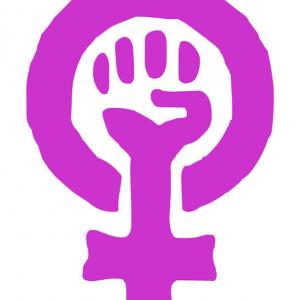
“Mom,” I asked, “why didn’t the ERA pass?”
It was 1982 and I was 13 years old — an age with sharp awareness of what is fair, but with no understanding of the forces aligned to thwart history’s progress. I was unaware of the storm swirling around the Equal Rights Amendment. I was only aware of my mother’s belief that it should pass.
I wasn’t an evangelical, yet – or even a churchgoer. I was simply a girl standing at the precipice of womanhood in a household led by a strong woman who cranked up the car radio whenever Helen Reddy’s “I Am Woman” or Gloria Gaynor’s “I Will Survive” piped through station-wagon speakers.
We are woman! We are strong! We are invincible. We are survivors and we roar!
So, I had no idea that Phyllis Schlafly (a conservative Catholic) and a broad contingent of evangelicals were actively campaigning against the simple amendment that required ratification that year.
The ERA was intentionally simple. Like the 19th Amendment, the heart of the amendment was one sentence long: “Equality of rights under the law shall not be denied, abridged by the United States or by any state on account of sex.”
Seemed simple enough. It was fair. Anything less would be unfair. So how could anyone stand against it?

As a preacher and pastor, I have had the privilege of speaking to people from a wide variety of demographics. Especially since I am a woman of color, these opportunities have made me acutely aware of how the silencing of women’s voices — whether imposed upon or by our own choice — has so severely hindered the imagination of men and women in our society.
Time and time again, I’ve heard from young women that I am the first Asian female preacher they’ve ever heard and/or seen. And this absence has a cost. In the stark absence of a woman’s regular presence in the pulpit across the landscape of church life and formation, we are allowing our young women (and men) to walk through this world with veiled eyes and muted ears, incapable of seeing and imagining possibilities for themselves and others.
While we may acknowledge that men and women are equal, I believe there is power in who speaks.
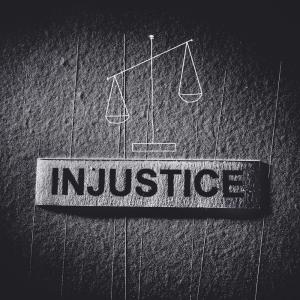
Black Future Month, a term coined by the new black vanguard, seeks to build upon the robust legacy of our foreparents while refusing to nostalgically rest upon their laurels. Black Future Month affirms our collective history of struggle, resilience, and achievement, while centering our present predicament in all its urgency. As this movement progresses, it’ll be imperative that we retain the spiritual foundation which anchored the freedom fighting of our ancestors,’ but this retention cannot come at the expense of passing the baton off to emerging leadership. We must go forward together, acknowledging that we need the collective wisdom of our people to navigate the troubled waters that surround us on all sides.
Black Future Month emerges from the #BlackLivesMater movement and the awareness that we’re in the midst of a watershed moment. There are currently “more African-American adults under correctional control, in prison or jail, on probation or parole, than were enslaved in 1850, a decade before the Civil War.” Black people currently constitute 12 percent of our nation’s populace, yet represent 40 percent of the nation’s incarcerated population. It’s estimated that 1 in every 3 black males will serve time in jail or prison in their lifetime and that 1 in 13 black people cannot vote due to felon disenfranchisement. As bleak as these realities are, mass incarceration is just a portion of the burden we’re bearing.

Revolutionary Love
Revolutionary love has given birth to new life.
We are gasping, breathing (I can’t breathe)
Screaming (We have nothing to lose but our chains)
We have been in the womb long enough
Blinking to the blinding light of the revolution
Our eyes adjusting
And we answer with what love looks like in public
Justice
I’ve been thinking about the life birthed out of revolutionary love. The night I met Waltrina, we stayed up until an ungodly hour — instant sister-friends. We bonded, talking about everything, about finding and losing faith — in God and humanity — then slowly picking it up again piece by piece, about being the diversity in mostly white professional spaces, about friends, family, and the struggle to find our places (as 30-somethings) in this “new” freedom movement.
Out of a deep revolutionary love inspired by Jesus and nourished from the well of our people, we have determined to get in where we fit in, living out the belief that there is a place for everyone in the movement.
Today's fight against the powers and principalities of systemic injustice cannot be left to the continued service of the elders that survived the 1960s civil rights movement, nor hoisted solely upon the shoulders of the teens and 20-somethings of today, just because they have energy and new ideas. Despite the focus on elders and youth, this is an intergenerational movement that requires all of us to answer the communal call. I am encouraged by one of my mentors, Mama Ruby (Sales) who says it is time to have all hands on deck.
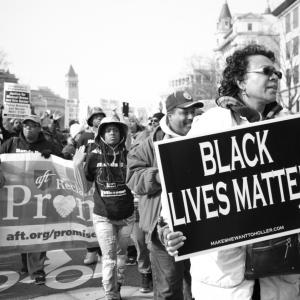
The zeitgeist is clear. Much like Emmett Till’s murder in 1955 sparked the civil rights movement, the tragic string of murders of blacks in 2014 catalyzed another movement, the #BlackLivesMatter movement. This movement picks up where the civil rights movement left off, addressing systemic racial injustice in the legal and penal system, educational system, and economic system. In some ways, the battles we fight are more challenging than the ones our grandparents fought. Undeniably, we face off in a more complex world and against forms of systemic racism that are so subtle that they are almost invisible. Nevertheless, due to a unique combination of gifts and experiences, I’m hopeful that my generation of black millennials is ready to lead us on to a more equitable society. Here’s why.
1. We are propelled by the prophetic legacy of the past.
With a technological savvy that gives us unprecedented access to the true history of our people, and as perhaps the last generation to breathe the same air as the civil rights generation, we draw upon the legacies of the past as we move forward. When I sense that my capacity to forgive is waning, I recall my recent conversations with several survivors of the 16th Street Baptist Church bombing in Birmingham, Ala., and I’m reminded of the inner healing that forgiveness promises. When I am tempted to pander to the powers that be, I call my radical granddad and ask him to tell me again about the many Black Panthers meetings that took place at the church he pastored in Berkeley, Calif., in the 1960s. When I feel that I’m losing my courage, I read Ida B. Wells’ autobiography and am reminded that we are not alone. We are connected — part of a chain of black activists, each generation inspiring the next. Our heroes guide us every day.
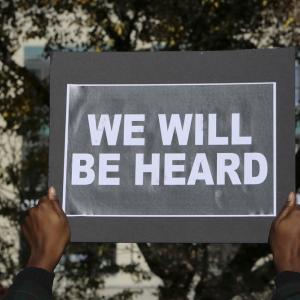
I cringed. Recently, I sat watching a cable news broadcast — can’t remember which one. What I do remember is it featured people doing good in the world … and it made me cringe.
Lots of people were highlighted, but the two young black people they featured both shared the same general narrative: So and so had a hard life. He came from poverty. She came from abuse or neglect. But they rose above. Now look at all they’ve accomplished. It was striking. None of the stories of white people started with this narrative. Rather, theirs usually went something like: Little Suzy or Johnny took a class project and turned it into a major non-profit that helps thousands of orphans … in Africa.
No matter where you tuned into this broadcast, blackness unconsciously was associated with hardship and overcoming while whiteness was associated with genius and compassion.
I sat there thinking: The truth is we have had centuries of hardship to press through. Our history is present, the good and the bad. As in Toni Morrison’s Beloved, the ghost of slavery haunts us. It affects our present. But it’s not just the past that haunts us. It is the same basic oppression of yesteryear —confinement, control, and disregard for black lives. So, it makes sense that the stories of our overcomers are as potent in current-day narratives as they are in history.
Jackie Robinson, Joe Lewis, Paul Robeson, Zora Neale Hurston, Billie Holiday, were the overcomers of our past. The black children in that broadcast were the overcomers of our present.
But what about the black future? One hundred years from now, will my family’s descendants still have to watch featured stories of black people doing good that always begins: So and so had a hard life?
During Black History Month we typically look back on all the accomplishments of those who paved the road for generations to come. But this month, we have been inspired by the #BlackLivesMatter movement to look forward to another kind of future for black men, women, and children.

I am the Dean of Students at Covenant Theological Seminary, the National Seminary of the Presbyterian Church in America (PCA). I am the pastor of South City Church in Saint Louis. South City Church is a PCA congregation, and it is predominantly white. I am a retired full colonel PCA Army chaplain. I was born and raised in North Saint Louis city. My father now lives in Ferguson, Mo. I am a black man. If that comes as a shock, believe me I understand; it is a shock to me every morning when I wake up and go to work at Covenant Seminary in West Saint Louis County, a mostly wealthy and white suburb. It shocks me every time I walk into my church in South Saint Louis and remember that I am one of only 47 black pastors in my denomination and that I work in a mostly white conservative, evangelical church. I am constantly at the feet of Jesus asking for help in navigating the racial, cultural, and generational waters around me. It is a wonderful opportunity, but it is challenging for someone like me; I grew up believing that white people never really wanted to be in close proximity to black people unless they were the ones controlling the situation. There was also the belief that the only black people who were successful in white organizations were the ones who did not mind being tokens without real dignity in the system. There may be people who believe these things about me. I have even questioned myself as to why I have been given so many opportunities in the PCA. I sometimes don’t like the answers that come to mind.
Recently, a young pastor asked my opinion on cross-cultural ministry. He asked me how an African American got two positions as both Covenant’s Dean of Students and as pastor of South City Church. I explained, “it makes no sense, since so much of the history in our denomination makes me the wrong guy for the job! But through God’s sovereign will, here I am!” His response was, “I guess God always sends the wrong messenger.”
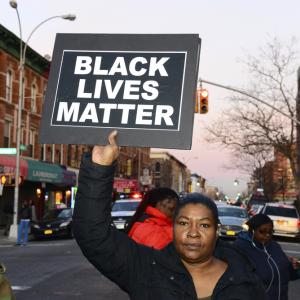
It is difficult to understand why people, particularly Christians, view a statement as patently obvious as “Black Lives Matter” as a subject for controversy. However, sometimes the most obvious things still need to be said.
So:
Black lives matter because God made every one of us in God’s image. Black lives matter because the Bible tells us that we are part of a body and the eye cannot say to the hand, “I don’t need you.” Black lives matter because God pays particular care to those crying out under the burden of injustice and oppression.
As people of faith in a neighborhood that has been rocked by protests, tear gas, and arrests, we have sought to stand in solidarity with those who are groaning under the burden of oppression. We offer some physical support — hand warmers, a cup of coffee, an extra pair of socks, but we also offer our presence. The Bible often refers to Christians as “witnesses,” and there is something important about simply standing next to our neighbors in the streets and seeing what is actually happening.
We firmly believe that Jesus needs to be down in the clouds of tear gas and he lets us, his people, participate in his reconciliation by bringing him there with our own two feet. Christians, and particularly evangelicals, need to be in the streets. Our neighbors are just outside our doors, crying out that the system is broken and that our culture doesn’t value the lives of our brothers and sisters. We, as Christians, believe in sin and brokenness and we need to live out our belief that God values all of God’s people even as our culture picks and chooses who is worth caring about.
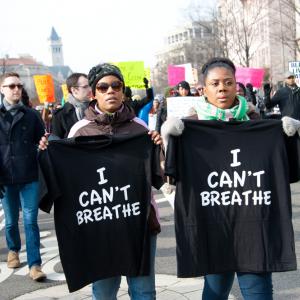
Maybe I am the only one wondering “What can I do?” as I watch and read the news of demonstrations throughout the country. I have a lot of excuses. I can’t go to the protests tonight because my son has a concert. I don’t coordinate the church service and announcements, so I can’t control what will and won’t be said. I’m on sabbatical so I won’t be a part of the conversations that I hope will happen between colleagues at meetings. But I hope I am not the only one wondering what can be, needs to be, ought to be done.
The videos are chilling – Eric Garner’s life is being choked out of him until he goes limp on the sidewalk and Tamir Rice is being gunned down, the police squad door barely opening as the officer drives by. The images of protests and protesters being tear gassed and throwing canisters back at police armed in riot gear remind me of the summer I spent in Korea, marching in protests against U.S. military presence. That was the summer I learned about wearing damp handkerchiefs near my eyes and over my nose to help with the sting of tear gas and how to wet the wick of a homemade Molotov cocktail before lighting and lobbing. A few years later in a hotel room in Indiana after a job interview, I watched protests and riots take over Los Angeles. Living with, wrestling with injustice day in and day out is a bit like a kettle of water just about to hit boiling. At some point, the water boils, the steam is released.

I grew up in a household run by a woman of the civil rights movement. My mother, born Sharon Lawrence in 1948, was a teenager when she joined the Student Non-Violent Coordinating Committee in 1966, one year after Dr. King’s legendary march from Selma to Montgomery and President Lyndon B. Johnson’s passage of the 1965 Voting Rights Act. With the foundations of progress and protection laid, there was still much work to be done. My mother was based in Philadelphia, where she helped establish one of SNCC’s embattled northern offices.
A few years back, as I fished through boxes brimming with old papers and notepads, I discovered handwritten notes from James Forman to my mother. Forman offered detailed instruction to the then 18-year-old young woman who would become my mother only a few years later. Her job was much like mine is now: church outreach. The way she tells it, there were only a few churches in Philadelphia willing to offer their pulpits for movement people to speak. It was her job to secure those pulpits when giants like Forman, Stokely Carmichael, and others came to town.
I grew up aware of the women of the civil rights movement — my mother was one of them.
Perhaps that’s why I was so struck by the rare effort made by the film Selma to highlight the roles of women in that struggle, which by many accounts was the high-water mark of the civil rights movement.
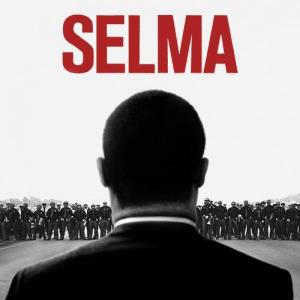
Just as Selma opened in wide-release I began to receive requests for advice on how to lead churches and faith communities through discussions of the film. Years ago, I used to lead these kinds of dialogues in my capacity as the Greater Los Angeles director of racial reconciliation for a college-based parachurch ministry. Some of our most fruitful conversations came after we saw films like Selma or read a book together or had a common experience of racial injustice that we needed to process.
The film Selma is an incredibly helpful dialogue centerpiece at the moment. But like all things, other dialogue opportunities will rise and take center stage in the coming weeks and months. Other films will be released, helpful books will be published, and public events will provoke us to need to dialogue again. When those opportunities surface, I recommend using the format below as a template for similar dialogues moving forward. I’ve collected my Top 5 recommended resources to help guide your community dialogue on racial justice and Selma.
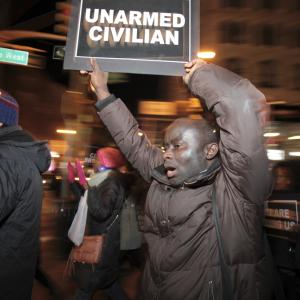
At the point of the writing of this article, it has been 124 days since unarmed 18-year-old Michael Brown was shot six times and killed by Ferguson police officer Darren Wilson.
Blocks from the spot where Brown lay dead in the tightknit Canfield neighborhood of Ferguson, Mo., protestors filled West Florissant Avenue, where Brown had been only minutes before his death. They were met by the local police force decked out in camouflage and body armor, armed to the gills with military-grade weapons, and rolling around in armored cars. Many commented that the streets of Ferguson looked like Fallujah.
It was both shocking and clarifying at once.
For the first time, Americans witnessed real-time outcomes of the National Defense Authorization Act, which funnels military weapons left over from past wars to local police municipalities across the country — in theory, to fortify local efforts in America’s drug war. Cable news cameras swarmed as wartime weapons, tactics, and protocols were enacted on unarmed, mostly black citizens exercising their First Amendment rights to assemble and exercise free speech.
Here’s the thing about war: There are only enemies and allies. There is no in-between.
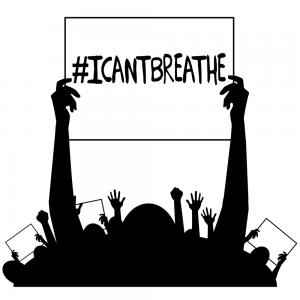
Our nation stands at a crossroads moment as the simmering crisis around policing and our justice system reaches a boiling point. Recent cases of police violence in Ferguson, Cleveland, and now Staten Island have stirred an awakening around what is increasingly understood as a pervasive and pernicious problem in America in which black lives are too often treated differently when it comes to police accountability and criminal justice.
Last week, I had the privilege of participating in a retreat with other faith leaders convened by Sojourners to learn about and make common cause with the ongoing efforts to seek justice in the tragic death of Michael Brown Jr. We spent a day talking to local faith leaders and young activists. We visited the memorial site in Ferguson where Brown was tragically killed and the streets where 120-plus days of protest have ensued. While it was heart-wrenching to stand and pray at the site where Brown was killed, I left the two days filled with a resilient sense of hope based on our conversations and interactions with a cross section of young people, most in their early to mid-20s, who embody modern-day freedom fighters. I hope we as a nation can listen to their voices and come to know their stories as we seek answers around what our response should be.
Young activists at the center of the protest movement in Ferguson are refusing to accept cosmetic change or symbolic commitments; instead they are fighting to transform their community and our nation so that neither punishment nor privilege will be systemically or viciously tied to the color of our skin. In the process, these young activists are picking up the broken pieces of the civil rights struggle. Their courage, willingness to sacrifice, and bold vision gave me a great deal of hope for what America can be.

Like sifted coal, the dust is settling after the recent election in the “War On Coal” zone in West Virginia and Kentucky. Ungloved fisted hands lifted high in victory, King Coal. Knocked out cold on the canvas, contenders misleadingly accused of having President Obama and his dreaded coal-killing EPA in their corner.
The campaign propaganda was drearily repetitive. The syllogistic script for Republicans, “My opponent is a Democrat. President Obama is a Democrat whose EPA is killing coal jobs. Therefore my opponent will kill your coal jobs.” Democrat candidates protested vigorously, “As top priority, we will fight to bring the EPA to its knees, and bring coal jobs back!”
It’s been decades since any semblance of a coal boom economy. Comparable coal tonnage is still coming out of Appalachian ground. Machines and explosives began replacing most of the miners in the 1950s. In recent years, Appalachian coal commerce has been facing competitive market realities of cheaper coal mined further west along with a natural gas surfeit. With thicker, accessible Appalachian coal veins long mined out, profitability can still be realized by shaving environmental and safety corners and restoring market demand. The Environmental Protection Agency stands in the way, or so mining communities are told.
I turn to the EPA website and read, “the mission of EPA is to protect human health and the environment.” The first listed EPA purpose is that “all Americans are protected from significant risks to human health and the environment where they live, learn and work.”
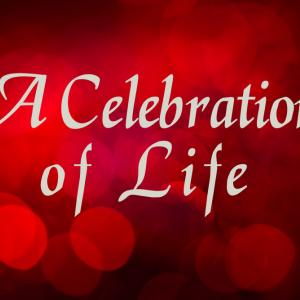
For the past several years, I have been less outwardly celebratory during the Christmas season. No wreaths, trees, or bad sweaters for me; I have chosen to be introspective during the end of the year season in order to keep my focus on the true meaning of Christmas. This has become increasingly difficult, as the process of commercializing the celebration of Christ’s birth begins right after Halloween and extends itself until after the nation celebrates the life of Dr. King in January. This year, it has been increasingly difficult to concentrate on this Season of Advent in light of all of the anger and protests going on around the country. The protests over grand jury decisions in both the Michael Brown (Missouri) and Eric Garner (New York) cases and the heartbreak and anger over the deaths of Tamir Rice (Ohio) and Akai Gurley (also in New York) have served for me as a reminder that we need to rally around life.
Many of those critical of the decisions in these cases say that black lives do not matter, and there is some validity to that in a nation that has never truly been delivered and healed from the effects of chattel slavery. Those on the other side say that these cases have gone to the judicial system and that the system should be respected, the issue dropped, and that personal responsibility is the mindset that will move the nation forward. While there is truth in both of those opinions, I am led to think of the joy the families of these dead men and boys must have felt at their birth – a moment of endless possibilities – and I also think of the finality – the end of chances represented by their deaths.

What do you see when you look at this picture?
In essence, that is the question St. Louis Prosecuting Attorney Robert McCulloch asked the grand jury to determine in his case against Officer Darren Wilson, who shot and killed unarmed 18-year-old Michael Brown on Aug. 9 in Ferguson, Mo.
According to an early report in TIME, McCulloch made an unusual move: He did not specify a specific charge for Wilson.
In a recent phone interview, Denise Lieberman, co-chair of the Don’t Shoot Coalition and senior attorney for the Advancement Project, explained to me: “Grand jury proceedings occur in private, so we don’t know exactly what’s been said … However, we’ve been told that the prosecutor is not making a recommendation to the jury about whether to indict and what charges … That is fairly unusual, if in fact that is true.”
Rather than specifying charges, two senior attorneys in his office are presenting all the evidence as it becomes available and letting the grand jury decide what charge(s), if any, that evidence warrants. McCulloch’s office claimed this process is fair because the grand jury, which is representative of the community of St. Louis, is able to see all of the evidence and then offer its decision.
According to Ed Magee, a spokesperson from McCulloch’s office, grand juries usually only review a few pieces of evidence. “Normally they hear from a detective or a main witness or two. That’s it,” Magee said in an early September interview with the Washington Post.
By presenting all the evidence to laypeople, reportedly without legal interpretation, McCulloch is basically raising a proverbial Rorschach to the grand jury and saying, “see what you see.” That is not a passive act in a society where 75 percent of people tested display some measure of unconscious racial bias.